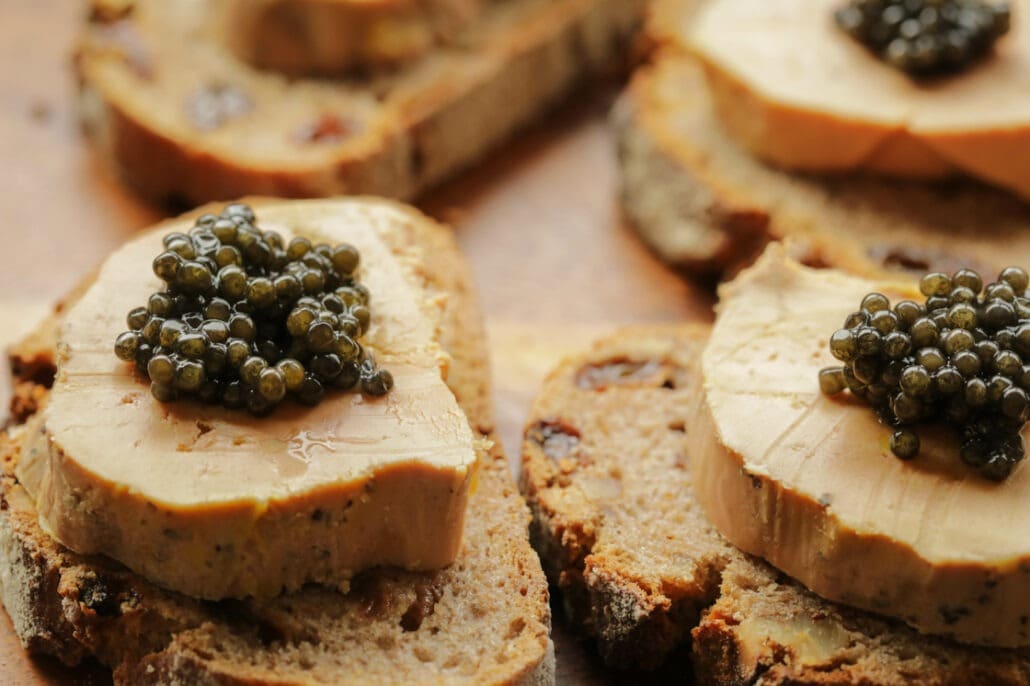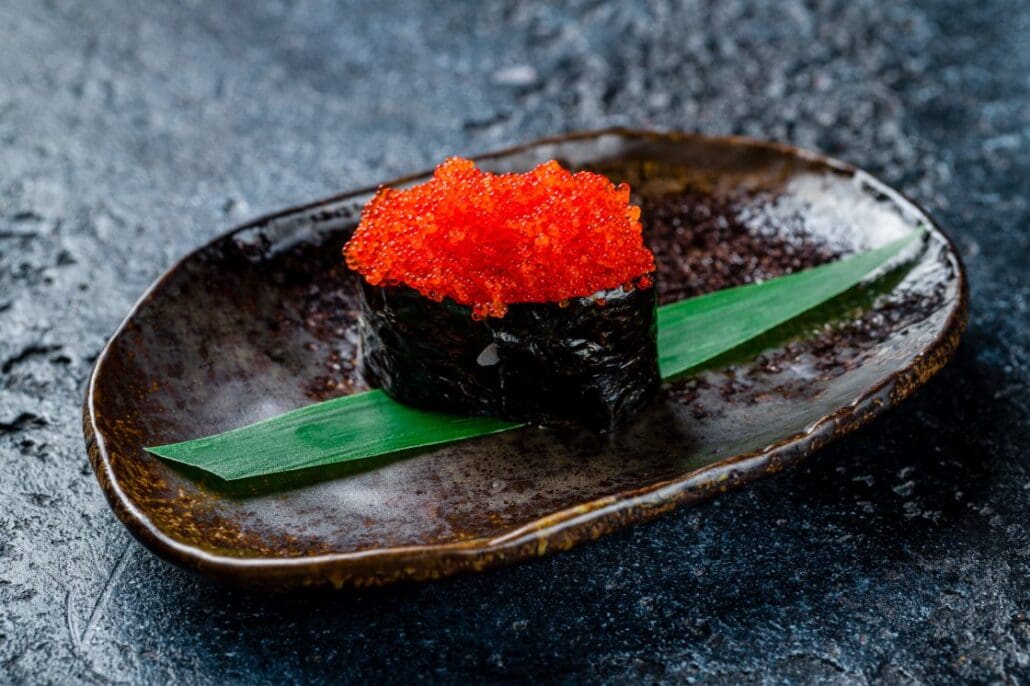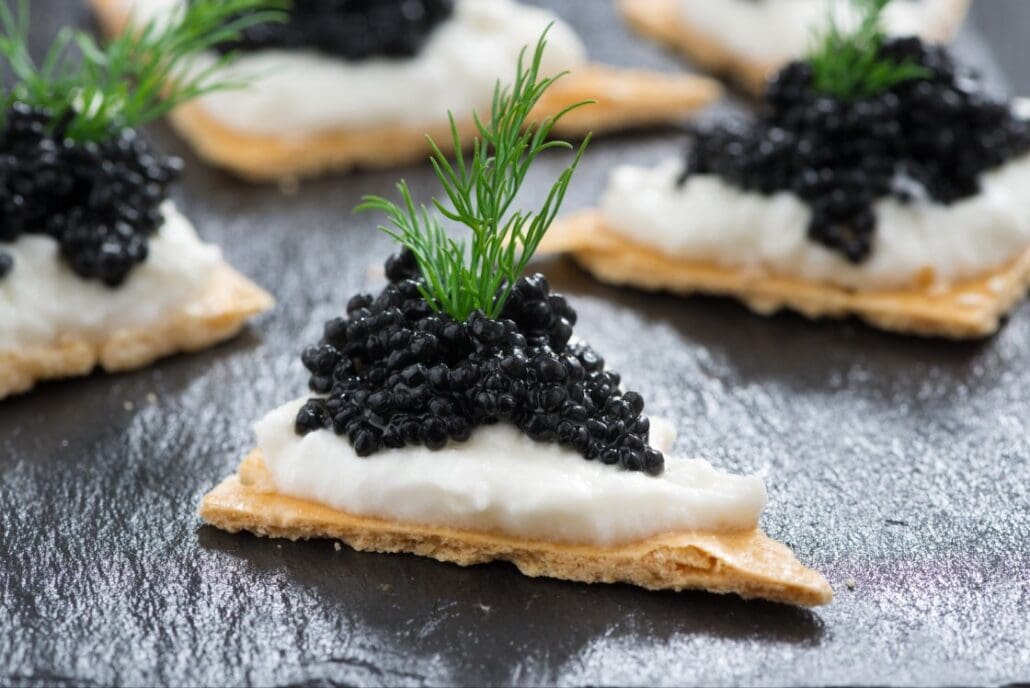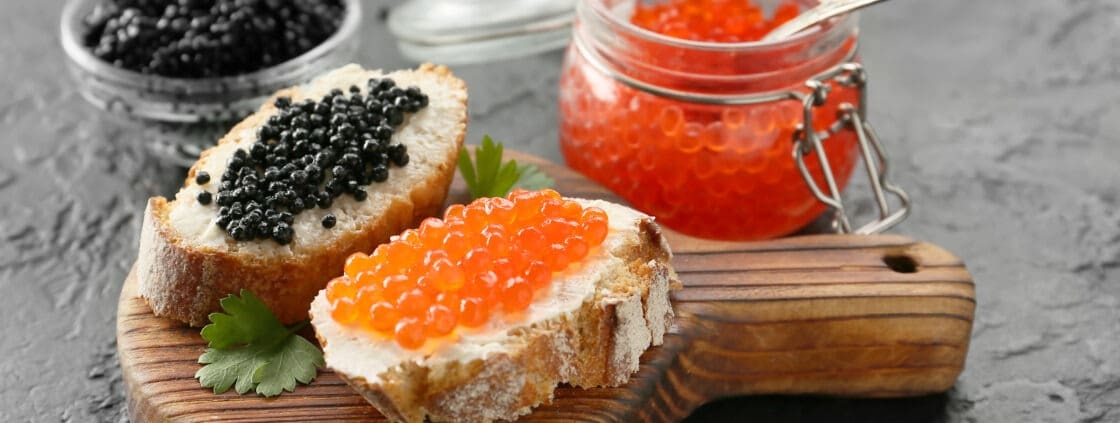Caviar vs. Roe: The Ultimate Guide
If you’ve always assumed that there’s no difference between roe and caviar, you’re technically correct, but it’s not quite that simple. Caviar is a type of roe, which is a broad term for fish eggs. However, caviar does have a specific definition.
There are many different types of roe, and they’re classified by the fish species that produce them. For example, some types of roe commonly used in Japanese cuisine include masago (Smelt roe), tobiko (Flying Fish roe), and ikura (Salmon roe).
Caviar refers strictly to the roe of Sturgeon species, such as Beluga Hybrid, Osetra, American Hackleback, and Siberian Sturgeon.
Join us as we take an in-depth look at caviar vs. roe, including their differences, similarities, and the unique factors that make caviar a truly exceptional type of roe.
Caviar Overview

Caviar is salted roe from sturgeon. Historically, wild caviar was harvested from the Caspian and Black Seas. However, these areas are currently facing issues such as water pollution and a decline in sturgeon populations. Today, the finest caviars are sourced from farm-raised sturgeon around the world, resulting in exquisite, high-quality products.
Caviar is famous for its uniquely complex, briny, and oceanic flavor, as well as its smooth texture, buttery mouthfeel, and satisfying pop when pressed against the roof of the mouth.
Caviar is typically served in a glass bowl over ice to keep it chilled and with a mother-of-pearl spoon to prevent its delicate flavors from being altered by metallic utensils.
When comparing caviar vs. roe, you’ll find that caviar is usually enjoyed on its own or with light accompaniments, such as blinis, toast points, crackers, or boiled potatoes.
Roe Overview

The difference between roe and caviar is that roe is an all-encompassing term. All fish eggs are roe.
Although non-caviar roe is most commonly used in Japanese cuisine, particularly as a topping for sushi or poké bowls, many people do eat it just like caviar. It’s not uncommon for high-quality roe such as Salmon roe, Trout roe, and Paddlefish roe to be served alongside caviar.
Roe tends to be much more affordable than caviar. Compared to caviar, it’s much easier, faster, and less expensive to produce other types of roe.
Furthermore, a big difference between caviar vs. roe is that caviar is cured and graded by experienced experts and must meet stringent quality standards. Caviar is the most rare and luxurious type of roe, and it’s processed accordingly.
Typical Tasting Notes
Caviar tends to taste rich yet delicate. It’s generally briny, slightly salty, and sometimes nutty. Many caviar enthusiasts say that there’s a mild marine flavor reminiscent of an ocean breeze.
The flavor of other types of roe tends to be more intense and less nuanced, lacking the complexity that makes caviar so unique. The flavors can certainly be enjoyable, but roe is typically used as an ingredient to enhance other dishes.
When comparing caviar vs. roe, it’s important to note that the overall flavor profiles of different types of caviar and roe do vary depending on a number of factors, including the fish species, how the roe was processed and cured, and its freshness.
Texture and Mouthfeel
Connoisseurs don’t only enjoy caviar and roe for the flavors. The distinct texture and mouthfeel are part of what makes these delicacies so special.
A big difference between roe and caviar is the way they feel in the mouth. True caviar is smooth, silky, and slightly creamy with a buttery finish. Caviar is traditionally rolled around the palate, creating a popping sensation that bursts with flavor.
Just like flavor profiles, the texture and mouthfeel of caviar vs. roe do vary by species. Non-caviar roe isn’t as decadent or refined on the palate. It’s usually crunchier, and some types of roe may have a gritty or sandy texture.
Common Culinary Applications

Caviar is the pinnacle of luxury. Such an exquisite delicacy is treated with great reverence. That’s why it’s usually served alone or with mild accompaniments that don’t mask the delicate complexity of both flavor and texture.
Toast points, blinis, crackers, or bread with crème fraîche are popular accompaniments. Serving caviar with boiled potatoes, onions, and crème fraîche is traditional in Russia. Another popular dish is caviar with hard-boiled eggs and chives. Caviar also pairs well with vodka, Champagne, and dry white wines.
As you learn about caviar vs. roe, remember that serving suggestions are just that—suggestions! Feel free to get creative with your dishes. Non-caviar roe is most famously featured in Japanese cuisine, but many fusion chefs use roe in a wide variety of compelling ways.
Processing Methods
A significant difference between roe and caviar is how they’re processed after being harvested.
Caviar is salt-cured through a process called “malossol,” which is a Russian word that means “A little Salt.” This curing technique enhances the natural flavors and textures of the caviar without drastically altering them.
Roe, on the other hand, isn’t processed as meticulously. Remember: a major contrast between caviar vs. roe is that caviar is especially rare. Because other types of roe are widely available, they’re not treated with the same care and attention to detail.
Some types of roe are flavored with other ingredients, such as soy sauce or sugar. It’s also common for roe to be dyed bright colors to give a more exciting presentation.
Explore Our Exclusive Caviar and Roe Collections
Caviar Emporium is a family-owned and operated caviar store that proudly offers top-shelf caviar and roe at highly competitive prices. We work closely with producers to ensure that our products are sustainable and meet our rigid quality standards.
If you’re still deciding between caviar vs. roe, we recommend treating yourself to true caviar so you can experience the ultimate indulgence. That said, we also offer superb roe that would be right at home served alongside the finest caviar.
We go above and beyond to provide our customers with the freshest possible American caviar and imported caviar. In order to minimize air contact, each batch is packed to order. This approach requires more time and effort, but the difference is worth it.
Take a moment to peruse our exclusive caviar and roe collections. If you have any questions, get in touch. Create unforgettable moments with exceptional caviar and roe.



